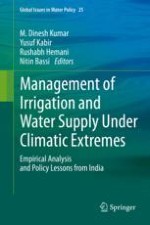2021 | OriginalPaper | Chapter
11. Action Plans for Building Climate-Resilient Water Supply and Sanitation Systems: Results from Case Studies
Authors : Nitin Bassi, Rushabh Hemani, Prasoon Mankad
Published in: Management of Irrigation and Water Supply Under Climatic Extremes
Publisher: Springer International Publishing
Activate our intelligent search to find suitable subject content or patents.
Select sections of text to find matching patents with Artificial Intelligence. powered by
Select sections of text to find additional relevant content using AI-assisted search. powered by
